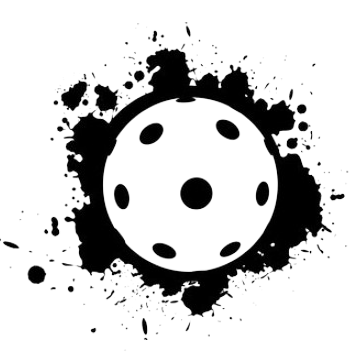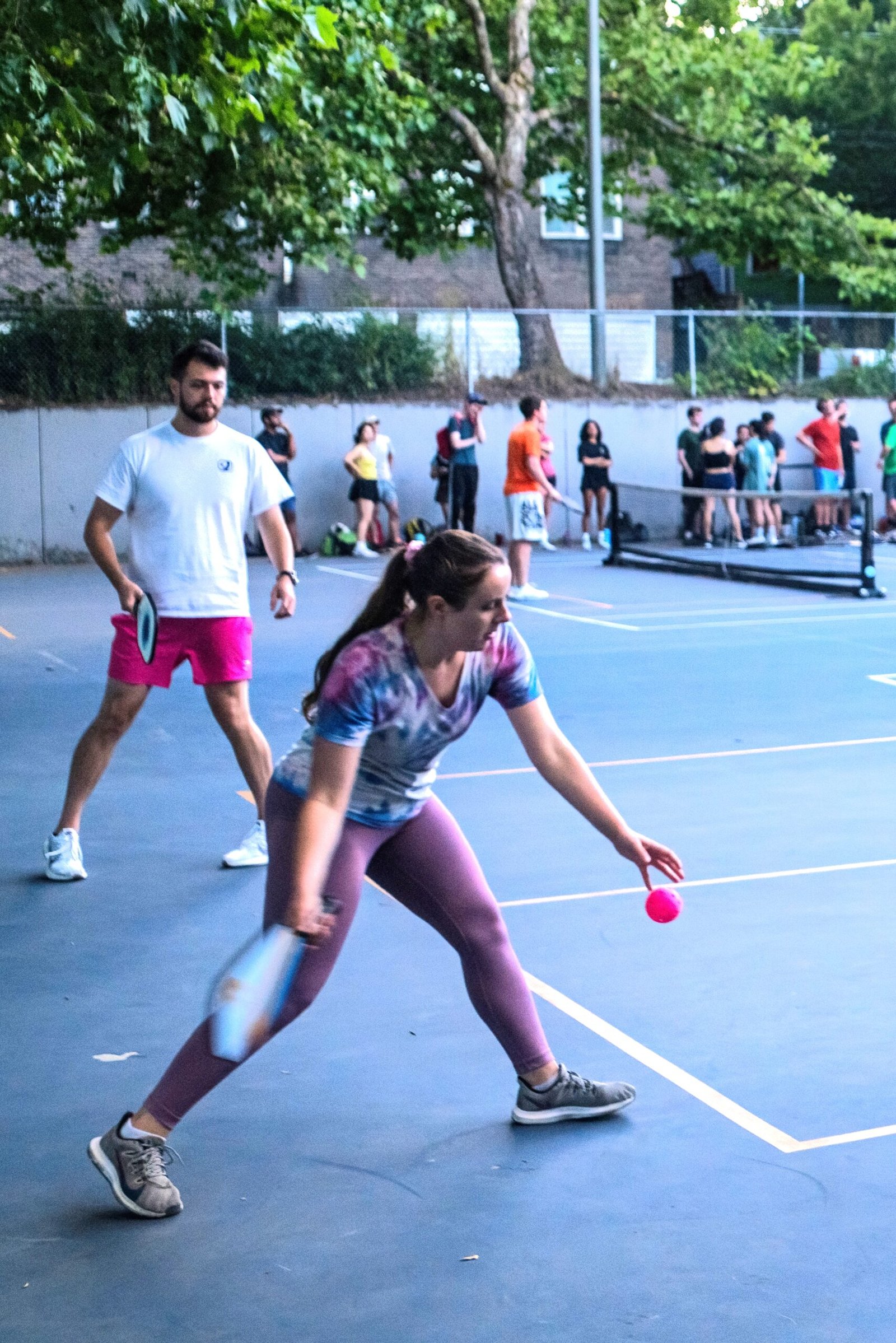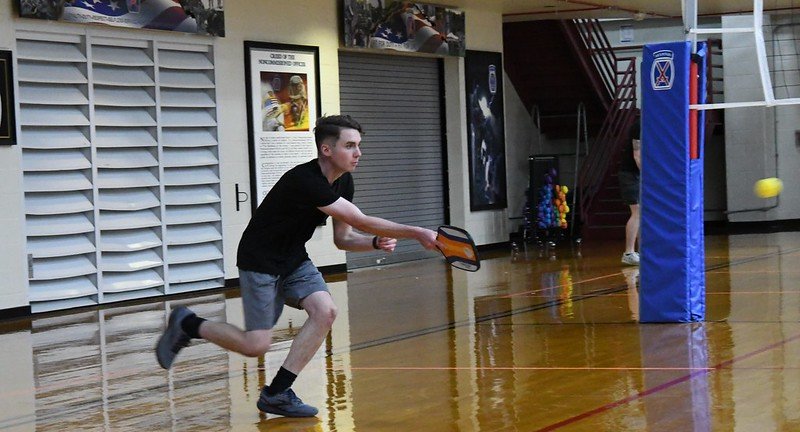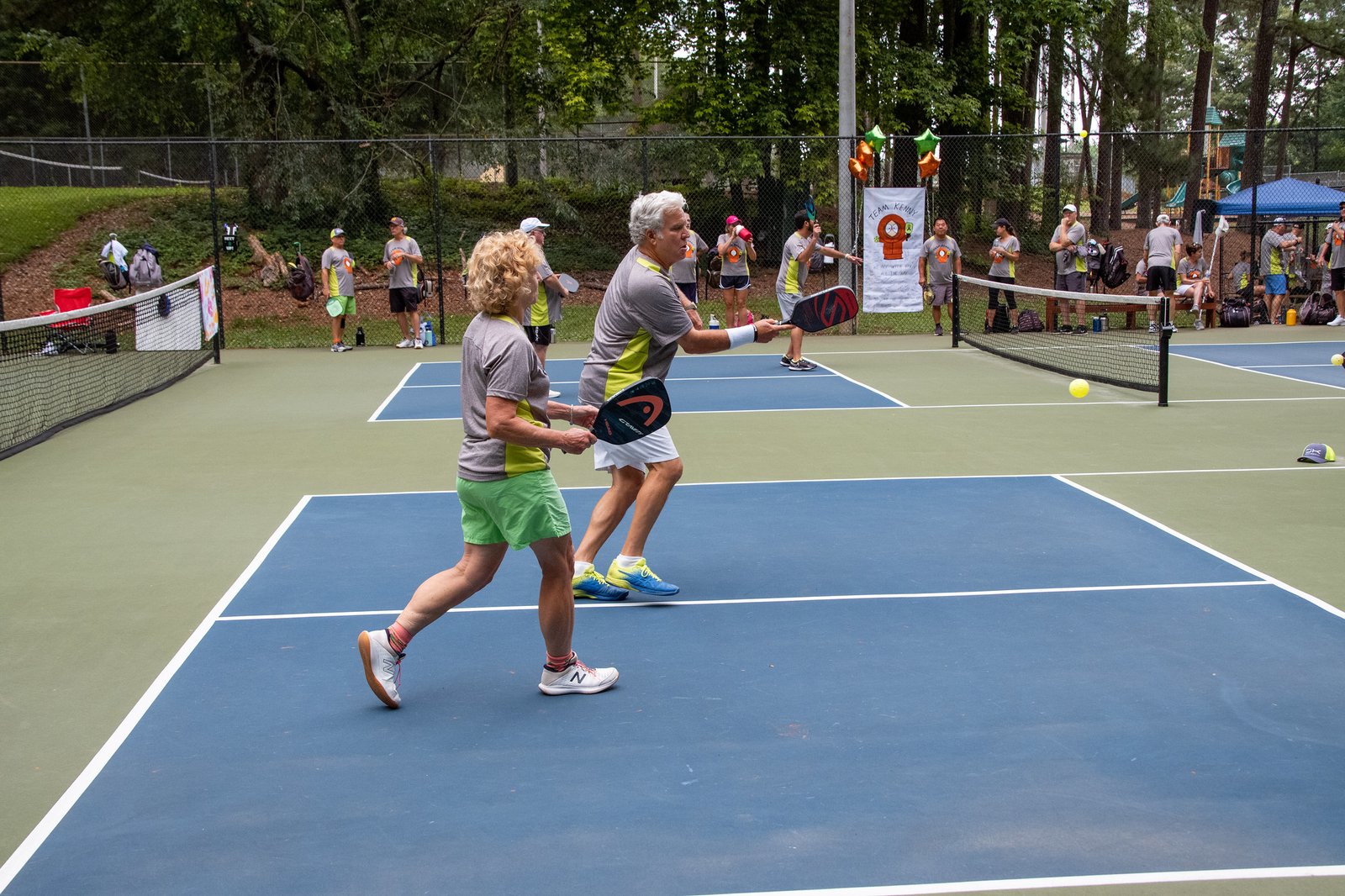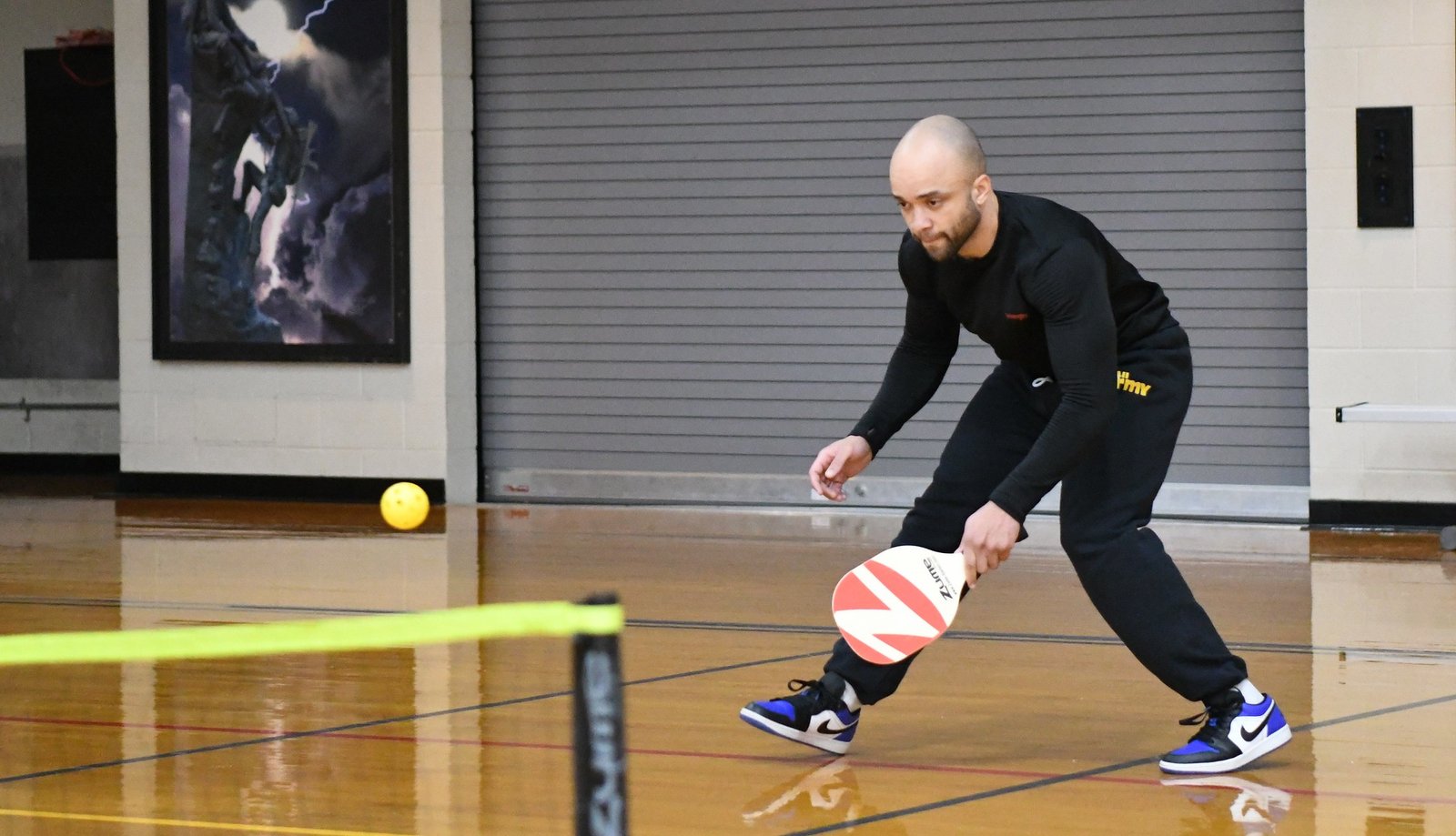Welcome to the exciting world of pickleball, where finesse meets strategy, and skill is the key to success on the court. As you embark on your journey to become a 4.0 player, you’re diving into the advanced intermediate level of this rapidly growing sport. Pickleball, a unique blend of tennis, badminton, and table tennis, demands not only physical prowess but also a sharp, strategic mind.
In this pursuit of mastery, the foundations matter. A solid serve sets the tone for the game, demanding accuracy and variety to keep opponents guessing. Mastering the return of serve is equally crucial, as it positions you to dictate the pace of the rally. The delicate art of dinking, a soft and controlled shot close to the net, becomes your secret weapon, requiring finesse and precision. Volleying, both forehand and backhand, at the net demands quick reflexes and a keen sense of positioning.
Understanding the nuances of court positioning and the non-volley zone (kitchen) is fundamental to success. Communication becomes paramount, especially in doubles play, where synergy with your partner can make the difference between victory and defeat. Adaptability is critical – being able to read your opponent’s game and adjust your strategy accordingly sets the 4.0 player apart.
Physical fitness forms the backbone of your journey. Endurance, strength, and flexibility are not just assets; they are prerequisites. A resilient mindset, the ability to stay focused under pressure, and strategic thinking elevate your game to the next level. It’s a holistic approach that combines the technical, physical, and mental aspects of the sport.
Continuous improvement is the mantra. Seeking feedback, regular practice, participation in tournaments, and a commitment to learning from every experience pave the way to 4.0 proficiency. So, tighten your grip on that paddle, lace up your court shoes, and get ready to elevate your pickleball game to new heights. The journey to mastery awaits, and the court is yours to conquer.

What is a Level 4 pickleball player?
A Level 4 pickleball player represents an advanced intermediate skill level, showcasing a commendable mastery of the game’s fundamentals and a growing proficiency in more advanced techniques. In the structured rating system commonly used in pickleball, where skill levels range from 1.0 (beginner) to 5.0 (professional level), a Level 4 player is situated in the upper echelons of intermediate play.
At this stage, a Level 4 player possesses a well-rounded set of skills, demonstrating consistency and accuracy in various aspects of the game. Serving, a fundamental skill, is executed with precision, incorporating different types of serves to add variety and keep opponents on their toes. The return of serve is marked by adaptability, with the player displaying the ability to handle different styles of serves effectively.
Dinking, a finesse shot close to the net, is a hallmark of Level 4 play. Players at this level showcase a keen understanding of touch and control, keeping the ball low and strategically placing shots to force errors from their opponents. Volleying, both forehand and backhand, becomes more refined, with the player able to handle fast-paced exchanges at the net confidently.
Court positioning is a critical element of Level 4 play. Players understand where to be on the court during different phases of the game, and they navigate the non-volley zone (kitchen) adeptly. Communication, particularly in doubles play, is honed to a level where partners anticipate each other’s movements and collaborate seamlessly.
Physical fitness is a crucial focus for Level 4 players. Endurance, strength, and flexibility contribute to their ability to endure long rallies, execute powerful shots, and move swiftly across the court. Mental toughness is also a defining characteristic, with Level 4 players maintaining focus, resilience, and strategic thinking even in challenging situations.
In summary, a Level 4 pickleball player is a skillful and well-rounded intermediate player who has progressed beyond the basics. This level marks an exciting stage in the player’s journey as they continue to refine their skills, deepen their strategic understanding, and strive for even greater proficiency on the pickleball court.
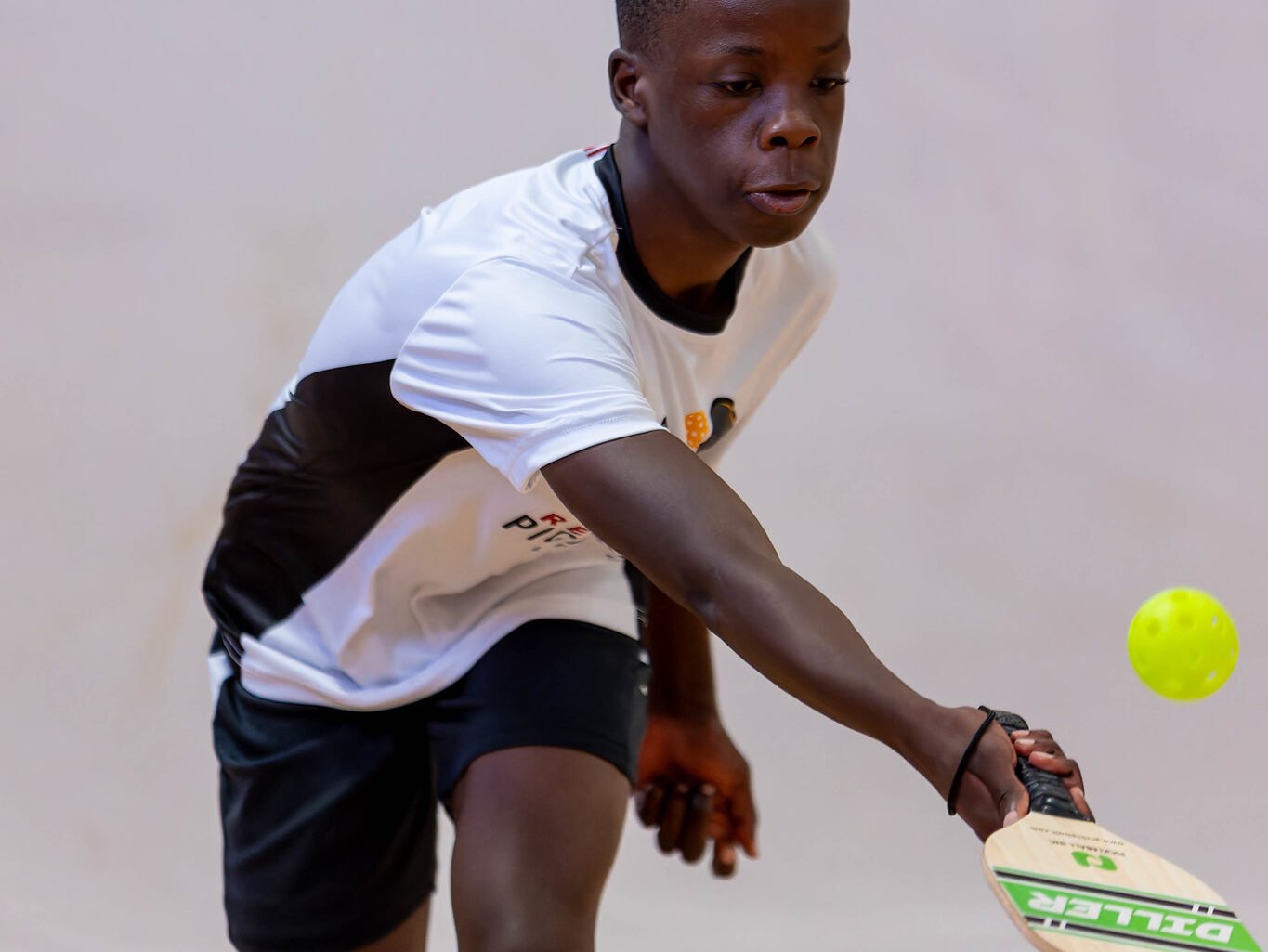
How do you advance from a 3.5 to a 4.0 pickleball?
Advancing from a 3.5 to a 4.0 level in pickleball requires a focused approach that combines technical refinement, strategic awareness, physical conditioning, and a resilient mindset.
Firstly, hone your technical skills. Work on consistently accurate serves, mastering various types such as the drive serve and spin serves. Refine your return of serve, incorporating different techniques to keep opponents on their toes. Prioritize dinking skills, ensuring your shots are not only precise but also low over the net. Elevate your volleying game, improving both forehand and backhand techniques. Address any weaknesses in your game by seeking feedback from experienced players or coaches.
Strategic awareness is crucial for the transition to a 4.0 level. Understand court positioning, recognizing when to be at the kitchen line and when to move back. Develop a repertoire of shots that can exploit opponents’ weaknesses. Improve your ability to adapt to different playing styles and situations, adjusting your strategy mid-game if necessary. Enhance communication with your doubles partner, building a cohesive game plan that maximizes your strengths as a team.
Physical conditioning plays a pivotal role in advancing to a 4.0 level. Strengthen your core and lower body for stability and agility. Focus on endurance training to handle longer rallies and multiple games. Flexibility is essential for swift and efficient movements on the court, reducing the risk of injuries.
Cultivate a resilient mindset to navigate the challenges of higher-level play. Learn from losses, analyzing your performance objectively. Develop mental toughness to stay focused during critical points and maintain confidence in your abilities. Embrace a growth mindset, viewing setbacks as opportunities for improvement rather than obstacles.
Consistent practice, participation in tournaments, and exposure to higher-level competition are essential for growth. Embrace a continuous learning mentality, seeking out opportunities to play with and against players of higher skill levels. Incorporate feedback into your training routine, continually refining your skills and strategies.
Advancing from a 3.5 to a 4.0 level in pickleball requires a holistic approach that encompasses technical refinement, strategic awareness, physical conditioning, and mental resilience. Dedication to improvement and a willingness to adapt your game are key elements in this exciting journey toward mastery.
Mastering Pickleball: Journey to 4.0 Excellence
Becoming a 4.0 player in pickleball requires a combination of skill development, strategic understanding, physical fitness, and mental toughness. The 4.0 skill level in pickleball is considered advanced intermediate, and players at this level exhibit a good knowledge of the game, sound technique, and effective strategy. Here’s a detailed guide to help you become a 4.0 player:
- Master the Basics
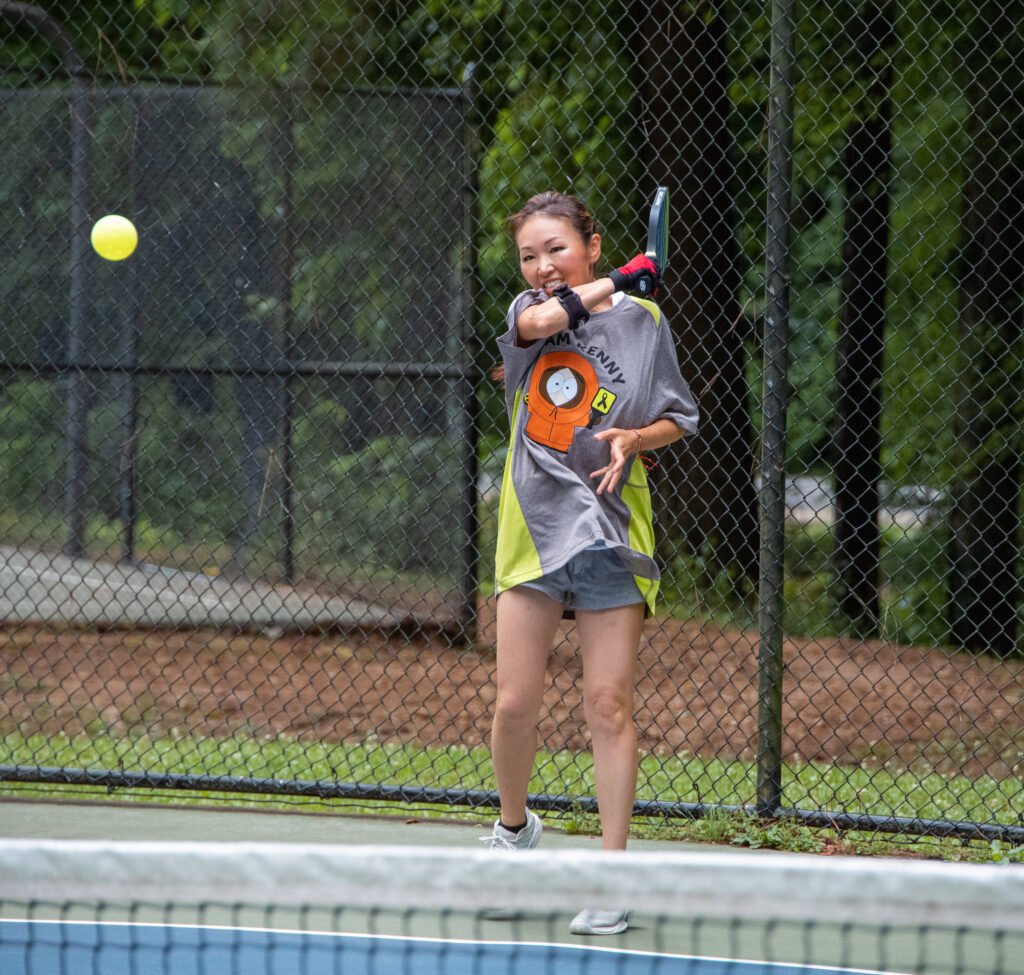
Serve
To elevate your pickleball game, focus on honing your serve skills. Develop a serve that is not only consistent but also accurate, as it sets the tone for each point. Diversify your serving repertoire by practicing variations like the drive serve, lob serve, and spin serves. This variety keeps opponents guessing and adds unpredictability to your game. Emphasize placement, aiming for strategic areas on the court to gain control from the outset. Mastering these serve techniques not only increases your chances of scoring but also puts pressure on your opponents, giving you a competitive edge. Consistent and well-placed serves lay the foundation for a solid offensive strategy, paving the way for success on the pickleball court.

Return of Serve
Enhance your pickleball game by diversifying your return techniques. Practice a versatile repertoire, incorporating dinking, drives, and drops into your skill set. Mastering these techniques allows you to adapt to different situations during a match, keeping your opponents off-balance and uncertain.
Furthermore, sharpen your ability to read your opponent’s serve with precision. Analyze their serves closely, paying attention to the spin, speed, and placement. Developing a keen understanding of your opponent’s serving patterns enables you to anticipate shots effectively and respond with strategic and well-executed returns. By refining both your offensive and defensive skills in returns, you’ll gain a significant edge on the court and move closer to achieving a 4.0 level of play in pickleball.
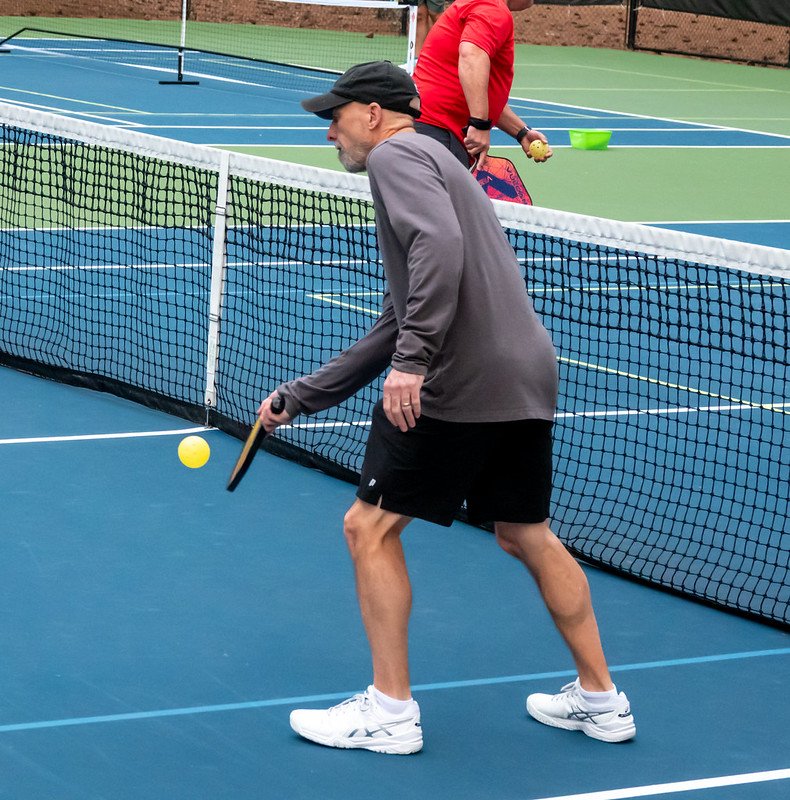
Dinking
Mastery of the dink is a pivotal skill in pickleball, involving precise execution of soft shots near the net. This delicate technique demands finesse, requiring players to develop a keen sense of touch and control. The objective is to keep the ball low, creating a challenging angle for opponents and increasing the likelihood of forcing errors. Successful execution of the dink involves a subtle blend of wrist control and a gentle touch, allowing the ball to barely clear the net and land softly on the opponent’s side. By mastering this art, players can gain a strategic advantage, disrupting their opponent’s rhythm and setting up opportunities for decisive plays at the net. The dink is not just a shot; it’s a tactical tool that adds depth and versatility to your pickleball game.

Volleying
Elevating your pickleball game involves a dedicated focus on improving your volley technique, which is especially crucial for handling rapid exchanges at the net. A proficient volleyer possesses the ability to react swiftly to incoming shots, maintaining control and precision during fast-paced rallies. Devote time to refining both forehand and backhand volley skills, ensuring a well-rounded proficiency at the net. A strong forehand volley enables you to dictate play and put pressure on opponents, while a reliable backhand volley provides versatility in your shot selection. Emphasize footwork and positioning to establish a solid foundation, allowing you to respond effectively to various ball trajectories. By honing your volley skills, you not only enhance your defensive capabilities but also set the stage for offensive plays, positioning yourself as a formidable force at the heart of the action in pickleball.
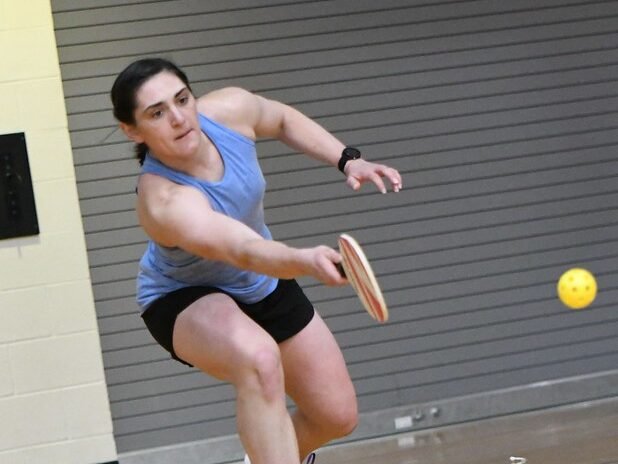
Footwork
Achieving success in pickleball demands more than just technical finesse; it requires agile court coverage and rapid lateral movements. Developing agility is crucial to efficiently navigate the court, ensuring you can reach and return shots effectively. Practice quick lateral movements to respond promptly to your opponent’s plays, maintaining optimal court positioning. An essential technique to enhance responsiveness is the split-step – a dynamic pause that readies you for sudden changes in direction. This anticipatory move allows you to react swiftly to your opponent’s shots, improving your overall court coverage. By honing agility and mastering the split-step, you not only become a more elusive and defensive player but also gain a competitive edge in dictating the flow of the game. Efficient footwork is the foundation upon which your strategic and technical skills can truly shine in the fast-paced world of pickleball.
- Understand Strategy

Court Positioning
Positioning is a critical aspect of pickleball strategy, requiring players to adapt during various game phases. Understanding where to position oneself is essential to gaining a competitive edge. Additionally, recognizing the significance of the non-volley zone, commonly known as the kitchen, is necessary. Players must grasp the dynamics of this area near the net, strategically deciding when to enter or retreat. Effectively navigating the kitchen demands quick and precise movements, optimizing court coverage while adhering to the non-volley zone rules. By mastering court positioning and the nuances of the kitchen, players can anticipate opponents’ shots, control the pace of rallies, and capitalize on strategic opportunities, ultimately enhancing their overall performance on the pickleball court.
Communication
Effective communication is paramount in doubles pickleball, where coordination with your partner can make or break a game. Establishing clear and efficient communication ensures seamless teamwork on the court. Developing a system of signals enhances your ability to convey strategies and intentions without verbal disruption. Understanding each other’s strengths and weaknesses is equally crucial, fostering a synergistic partnership. By acknowledging your partner’s playing style, preferences, and tendencies, you can strategically position yourselves for optimal court coverage and shot selection.
This mutual understanding allows for quick adjustments during dynamic exchanges, creating a formidable duo. In the realm of doubles, the ability to communicate seamlessly and anticipate each other’s moves elevates your collective performance and increases your chances of success on the pickleball court.
Adaptability
Adaptability is a cornerstone of successful pickleball play. To thrive on the court, players must possess the ability to assess and respond to the strengths and weaknesses of their opponents. This involves a keen understanding of the opponent’s playing style, preferences, and areas of vulnerability. It’s not merely about executing a predetermined strategy but rather about dynamically adjusting your approach based on real-time observations.
Learning to adapt goes hand in hand with the capacity to adjust your game plan on the fly during a match. Pickleball is dynamic, and opponents may be surprised with varying tactics. A 4.0 player excels not just in executing a set plan but also in recognizing shifts in momentum opponent strategies and adapting their gameplay accordingly. This adaptability not only keeps you competitive but also positions you as a strategic and unpredictable force on the pickleball court.
- Physical Fitness

Endurance
Building stamina is a fundamental aspect of elevating your pickleball game, mainly to withstand the demands of prolonged rallies and multiple consecutive games. Endurance training is critical, focusing on activities that enhance cardiovascular fitness and overall stamina. Engage in exercises such as running, cycling, or high-intensity interval training to improve your cardiovascular system’s efficiency. These activities not only boost endurance but also contribute to better overall fitness, enhancing your ability to sustain peak performance throughout the entirety of a match. As pickleball requires short bursts of intense effort followed by moments of recovery, a well-conditioned cardiovascular system ensures you remain agile, alert, and capable of maintaining a high level of play, making stamina a critical component in your journey to becoming a proficient and competitive player.

Strength Training
Building a robust physical foundation is essential for elevating your pickleball game. Start by strengthening your core and lower body to enhance stability and facilitate swift movements across the court. Engage in exercises that target the abdominal muscles, lower back, and legs, improving your agility and balance during dynamic play.
Additionally, direct attention to your upper body strength, specifically the shoulders and arms. These muscle groups are pivotal for generating power in your shots. Incorporate exercises like shoulder presses, lateral raises, and tricep extensions to develop the strength necessary for authoritative and controlled shots. A well-conditioned upper body not only amplifies the force behind your serves and volleys but also reduces the risk of fatigue, allowing you to maintain peak performance throughout the entirety of your pickleball matches. Strengthening both your core and upper body ensures a comprehensive approach to physical fitness, contributing significantly to your effectiveness on the pickleball court.

Flexibility
Incorporating stretching routines into your pickleball training regimen is crucial for enhancing flexibility and mitigating the risk of injuries. Flexibility is a critical component of optimal athletic performance, and in the dynamic nature of pickleball, it plays a pivotal role. By regularly engaging in stretching exercises, you improve the range of motion in your joints, allowing for more fluid and efficient movements on the court.
Dynamic stretches, such as leg swings and arm circles, prepare your muscles for the specific demands of pickleball, promoting better agility and responsiveness. Static stretches, focusing on major muscle groups, contribute to improved overall flexibility, reducing the likelihood of strains or injuries during play. Dedicate time before and after your sessions to these stretches to not only enhance your physical performance but also to promote long-term joint health, ensuring you’re in prime condition to elevate your pickleball game.
- Mental Toughness
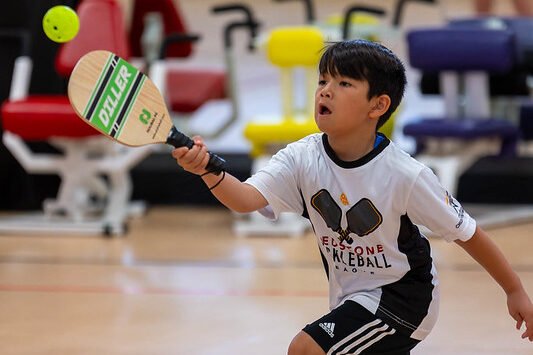
Focus
The ability to stay focused during crucial points is paramount in the competitive realm of pickleball. Distractions can be game-changers, and developing unwavering concentration is an essential element of success. Players aiming to elevate their game to a 4.0 level should actively cultivate mental resilience. This involves honing the skill to shut out external influences maintaining a singular focus on the task at hand. Mindfulness techniques become invaluable tools in this pursuit. By practicing mindfulness, players enhance their concentration, enabling them to stay present in the moment, block out noise, and navigate high-pressure situations with composure. Whether it’s a pivotal serve or a critical rally, a focused mind is a formidable asset in achieving success on the pickleball court.
Resilience
In the dynamic world of pickleball, resilience is a vital attribute. Learning to rebound swiftly from mistakes and setbacks is essential for sustained success on the court. Cultivating a positive mindset is equally crucial, fostering confidence even in the face of challenging situations. Embracing a perspective that sees setbacks as opportunities for growth enables players to maintain composure and focus during intense matches. This mental resilience not only enhances overall performance but also contributes to a player’s ability to make strategic decisions under pressure. Developing a positive mindset involves acknowledging errors as part of the learning process and maintaining a belief in one’s capabilities. In pickleball, where momentum can shift rapidly, the ability to bounce back and stay mentally strong is a key factor that distinguishes top-tier players.
Strategic Thinking
In the dynamic world of pickleball, resilience is a vital attribute. Learning to rebound swiftly from mistakes and setbacks is essential for sustained success on the court. Cultivating a positive mindset is equally crucial, fostering confidence even in the face of challenging situations. Embracing a perspective that sees setbacks as opportunities for growth enables players to maintain composure and focus during intense matches. This mental resilience not only enhances overall performance but also contributes to a player’s ability to make strategic decisions under pressure. Developing a positive mindset involves acknowledging errors as part of the learning process and maintaining a belief in one’s capabilities. In pickleball, where momentum can shift rapidly, the ability to bounce back and stay mentally strong is a key factor that distinguishes top-tier players.
- Continuous Improvement

Feedback
Elevating your pickleball game from good to extraordinary involves a commitment to continuous improvement. Seeking feedback from seasoned players or coaches provides valuable insights into nuances you might overlook. Their experienced perspective offers targeted advice to refine your skills and strategic approach. Additionally, embrace the power of technology by analyzing your gameplay through video recordings. Watching yourself in action unveils aspects of your performance that may escape immediate notice. It allows you to scrutinize your movements, shot selection, and court positioning, pinpointing specific areas for improvement. This combination of external guidance and self-reflection becomes a potent formula for progress, fostering a deeper understanding of your strengths and weaknesses. By integrating feedback and analysis into your training regimen, you pave the way for a consistent upward trajectory in your pickleball proficiency.
Practice
Regular and diverse practice is essential for pickleball improvement. Engage with players of varying skill levels to expose yourself to different playing styles and challenges, fostering adaptability. By stepping onto the court with opponents of different abilities, you not only refine your skills but also learn to strategize effectively. Focus on specific weaknesses during practice sessions, whether it be your serve, returns, or court positioning. Targeted improvement in these areas enhances overall performance. Simultaneously, consistently refine your strengths to maintain a well-rounded game. This iterative process of identifying weaknesses, honing strengths, and adapting to diverse opponents contributes significantly to your growth as a pickleball player. Embrace the continuous journey of improvement, and every practice becomes a stepping stone toward reaching new heights in skill and proficiency.

Tournaments
Engaging in local tournaments is a crucial step towards honing your pickleball skills. These events provide invaluable match experience, exposing you to diverse playing styles and intensifying competition. Every match becomes a learning opportunity, offering insights into your strengths and areas for improvement. Embrace each game as a chance to refine your strategies, adapt to different opponents, and enhance your overall performance. Analyze the outcomes meticulously, identifying patterns, strengths, and weaknesses. The knowledge gained from tournament play becomes a catalyst for continuous improvement, shaping your game and elevating your competitive edge. By actively participating in these events and leveraging them as platforms for growth, you not only enhance your skills but also contribute to the dynamic and thriving pickleball community.
Achieving and sustaining a 4.0 skill level in pickleball demands a holistic commitment to various elements within your training regimen. By mastering the fundamentals like serves, returns, dinking, and volleys, you lay the groundwork for a versatile and practical playing style. Understanding court positioning, strategic communication in doubles play, and adaptability further refine your game, setting you apart as an advanced intermediate player.
Physical fitness is the cornerstone of your journey. Endurance, strength, and flexibility contribute to sustained peak performance during matches. Cultivating a resilient mindset, staying focused in high-pressure situations, and embracing a growth mentality are equally crucial aspects of mental conditioning.
Consistency in practice and dedication to improvement are non-negotiable. Actively participating in local tournaments provides practical experience, allowing you to test and fine-tune your skills against various opponents. Remember, the journey to a 4.0 skill level is ongoing. Be open to continuous learning, seeking feedback, and adapting your strategies. The top-level players in pickleball thrive on a combination of skill, strategy, and a relentless pursuit of refinement. Consistency, dedication, and a thirst for knowledge form the bedrock of your ascent to becoming a formidable 4.0 player.
